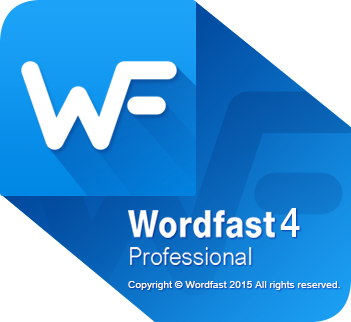

It creates unclean files compatible with unclean files from Trados translation in Word, and TMs can be swapped via. Wordfast Classic (also known as Wordfast 5.5)Ī set of Word macros which you can use to translate.
#Wordfast classic how to create and use a tm pro#
Wordfast Pro (this FAQ, the latest version is Wordfast Pro 4 and can be downloaded here: ). This text was initially published on Translation Article Knowledgebase (and written for it).There are several different tools belonging to the Wordfast "family": UPDATE: I published this English to Serbian translation glossary on my page. From my experience adding items to such “extended glossaries” is best done sparingly during the translation, and in details after the work is finished. Although the inclusion of new items is very simple, it breaks the continuity in work – and could, in fact, prolong the finishing of the translation. However, creating the glossary requires time. If “known” phrases are lengthy and in different cases in the target translation, this will speed up the translation. Thus, we can include not only unknown terms, but common ones as well. We can expand the meaning of the glossary, understood as a “termbase”, to the notion of “versatile text holder”. If WFC finds multiple entries for a glossary item, it will display all corresponding meanings from which you can choose by using a small popup window. One might wonder what happens with synonyms. This use is now beyond the management of terminology and closer to the TM use. For example “democratic institutions” can be in the nominative case, but “of democratic institution” is in the genitive case. Secondly, by providing several examples of the same phrase, it is possible to cover most cases of a particular phrase. Firstly, it is easy to insert the glossary items in the translation by using shortcuts, so lengthy items are no more a problem. However, there are two interesting things about the examples. Internet Corporation for Assigned Names and Numbers – Internet korporacija za dodeljene brojeve i imenaĮuropean Investment Bank – Evropska investiciona bankaĮuropean Bank for Reconstruction and Development – Evropska banka za rekonstrukciju i razvojĪs you can see, nothing particularly unknown is listed above. To do all that was required – uraditi sve što je potrebno On a political level – na političkom nivou Ministry of Infrastructure – Ministarstvo za infrastrukturu With democratic institutions – sa demokratskim institucijama Of democratic institutions – demokratskih institucija Have a look at some of the entries in our sample glossary (EN-SR): company's representative – predstavnik kompanijeĭemocratic institutions – demokratske institucije And here lies the combined power of the WFC shortcuts and glossaries. We are going to broaden the “range” of glossary and include not only unknown terms, but specifically – phrases and sentence parts/clauses. The WFC allows four glossaries at the same time, so there is room for the glossaries acquired beforehand. Here comes a very important question: what to put in the glossary to speed up the translation? Some translators stick to the meticulously selected words they look up in dictionaries, or they load glossaries provided by a translation agency. Overuse of the Glossary, What to Put in It When WFC recognises the term it highlights it, and then the translator can select it by pressing CTRL + ALT + LEFT/RIGHT ARROW, and place it into the target segment with CTRL + ALT + DOWN ARROW. After putting the cursor in front of a source word (or selecting multiple words) and pressing CTRL + ALT + T once, and then repeating this in the translation segment, the entry window pops up and, after saving, the word/phrase is ready for use. That significantly compensates for the restricted usefulness of the translation memory. The WFC has well organized glossaries, which are easy to use due to the shortcuts. 

After all, if the TM is of limited use, the CAT is helpless, just like a translator. TM here functions as a reference, except in rare cases when background information is appended to a piece (two or three brief paragraphs that repeat occasionally). Such content is usually unique and it is not possible to use TM to a satisfying degree: most of the sentences do not repeat.

The author of this text has translated many pieces of news. On the contrary, you can work more efficiently with the selective use of the powerful glossary function in Wordfast Classic (WFC). For some types of translations translation memory (TM) and fuzzy matching are not very useful, but this does not mean that a CAT application itself is useless.








 0 kommentar(er)
0 kommentar(er)
